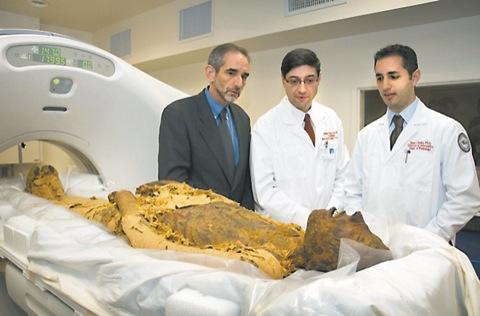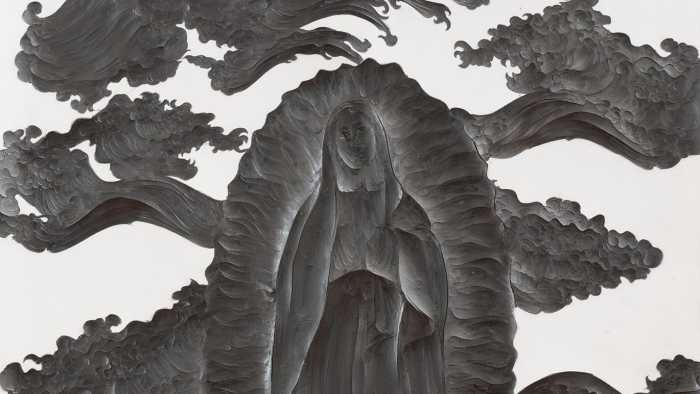Talk about an identity crisis.
Doctors now say that a 2,000 year−old Egyptian mummy in the Brooklyn Museum — thought to be Lady Hor — is actually a “he.”
A CT scan last week determined the mummy’s true gender, revealing an ancient penis and scrotum.
The mummy, discovered 70 years ago in Thebes, was believed to be a woman because “her” coffin lacked the beard ornamentation male mummies typically showcase, officials said.
Doctors at North Shore University Hospital in Long Island ran scans on Lady Hor. Three other mummies were examined, including Pasebakhaienipet, mummy of the royal prince, Count of Thebes, Carbon 14 dated about 1188− 909 BC; Thothirdes, 791−418 BC; and a nameless mummy whose linen dressing Carbon dates at about 244−419 AD.
Aside from the surprising anatomical discovery, doctors also found the presence of a reed−type of tube located in the Count of Thebes’ chest area, which Brooklyn Museum Egyptologists theorized was inserted in the count’s chest to keep his chin up in a more regal position throughout eternity — a lasting tribute to his rank and stature.
“This, to us, is the perfect blending of art and science,” said Dr. Amgad Makaryus, the hospital’s director of cardiac CT and magnetic resonance imaging (MRI). “By utilizing this state−of−the−art technology, we make contact with antiquity, without conducting invasive procedures or otherwise damaging our subjects. This is the humanity behind science.”
Egyptologists at the Brooklyn Museum brought the mummies to the hospital to learn more about their identities, cause of death and possibly, Egyptian funerary practices. “We hope that these detailed tests will show us more about the gender, medical history and general condition of these ancient human beings,” said Dr. Jesse Chusid, a radiologist at the hospital who specializes in the study of bones and skeletal tissue.
The mummies were expected to return to the museum, located at 200 Eastern Parkway, on June 30. Their scans will one day be included in the exhibit.




















